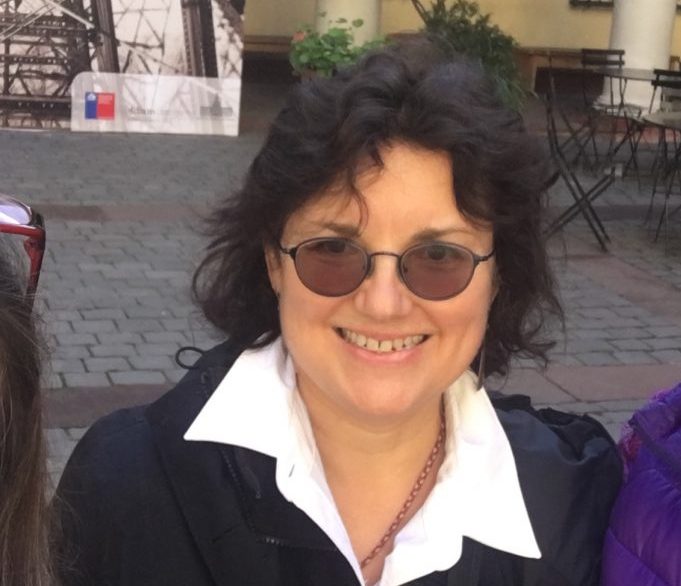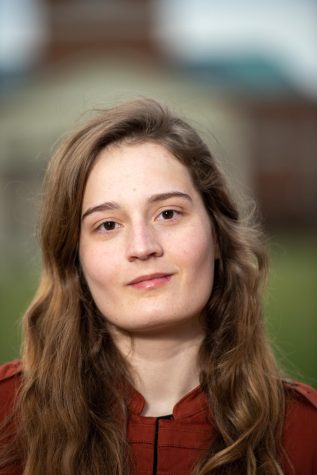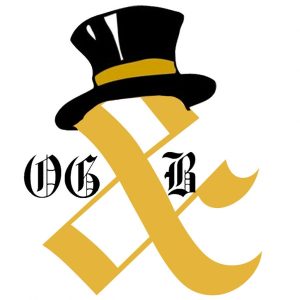Deacon Profile: Margaret Bender
WFU professor works to help preserve Cherokee language and culture
Margaret Bender poses for a photograph in Chile.
February 15, 2023
In the western region of North Carolina, just south of the Great Smoky Mountains National Park, live the officially recognized Eastern Band of Cherokee Indians (EBCI). The tribe is undertaking language revitalization efforts for the endangered Cherokee language — an initiative that Wake Forest anthropology professor Margaret Bender is assisting.
The Cherokee language (or Tsalagi, which is its name in Cherokee) is fundamentally distinct from English and other European languages and illustrates striking cultural differences. Time, space and relationships are understood differently, and many Western social concepts such as poverty, chattel slavery and patriarchal structures had no expressions in Cherokee before colonization. Many words and expressions that exist in Cherokee have no direct translation into English or any other languages — representing unique ways of conceptualizing and understanding the world. However, the diversity of knowledge found in the Cherokee language risks disappearing as the language itself confronts extinction.
A 2018 survey in Ethnologue, a language reference publication, found that only 1,520 Cherokee spoke the language fluently out of 376,000 registered Cherokee — largely a consequence of the historical ban on allowing Cherokee children to speak their language at school and the difficulty of learning the language for English speakers.
The Cherokee newspaper Tahlequah Daily Press estimates that eight fluent speakers die each month, and as of 2019, there were only five fluent speakers in their 30s and 40s. Bender estimated that, of the 1,520 fluent speakers, only a couple hundred belong to the EBCI, making community revitalization efforts urgent.
The cultural differences that language reveals have long since fascinated Bender. Their desire to preserve this diversity combined with their interest in Cherokee, which emerged while they were pursuing their Ph.D. at the University of Chicago in the 1990s.
“I’ve always been fascinated by the relationship between language and culture, especially the way language encodes worldview and ways of conceptualizing things,” Bender said. “I didn’t go to that Ph.D. program planning to study Cherokee. It just happened that I developed this interest in it and that [Ray Fogelson], probably the greatest expert in cultural anthropology on Cherokee culture at the time, was also there. Everything came together.”
Bender’s specialty led her to North Carolina, where she assisted with creating a digital dictionary through the Eastern Cherokee Language Project. The database contained hyperlinks to audio pronunciation files and words contextualized within sentences. Today, iPhone users can access a Cherokee keyboard on their phones, but no such resources existed in the ’90s before the explosion of the Internet.
This meant that the dictionary was a cutting-edge and invaluable resource for those learning Cherokee — especially for those in the Eastern Band, who speak the Kituwah dialect. Though this dialect is mutually intelligible with the Western dialect spoken by the larger Cherokee Nation tribe in Oklahoma, its distinctions are also preserved through such initiatives.
More recently, Bender’s language preservation work has centered on New Kituwah Academy Elementary (also known as Atse Kituwah Immersion Academy), an EBCI Cherokee language immersion school that the community founded in 2004. The school — like much of the Cherokee community — understands that the Cherokee language and its knowledge are intimately connected with indigenous identity. Within its belief statement, it notes that the Kituwah (Cherokee) people cease to exist without the Cherokee language. Running from kindergarten through sixth grade, the school seeks to revitalize the Cherokee language among young speakers and teach Cherokee children to embrace their heritage and traditions.
Creating an immersion school for a near extinct language posed significant challenges, one being that few learning materials were available in the target language — let alone to teach children subjects such as science or math. If a teacher wanted to implement a lesson plan about metamorphosis, someone had to create a worksheet in Cherokee from scratch. Further, as the first class of students advanced through each grade, it was necessary to make an entire new year’s worth of material.
Volunteers such as Bender completed some of this work, enabling teachers to devote greater time to students. Bender’s specific project involved partnering with Cherokee authors to create Cherokee storybooks and gathering other content for use in the classroom—though she noted that her contributions were modest compared to those of many other Cherokee scholars and speakers.
Bender has also supervised and trained Wake Forest students in Cherokee to assist with preservation efforts. Bender taught graduate Jacob Daunais (‘15) and several other students Cherokee in an independent study. Later, Daunais translated Cherokee texts into English and helped create a children’s book in Cherokee — work complicated by the many differences between Cherokee and English grammar, as well as the unique Cherokee syllabary, which has 85 characters. He also assisted for two summers at the Snowbird summer language camp, which takes place over six weeks in the isolated mountain town of Snowbird, NC. There, in addition to simple translation tasks, Daunais adjusted games like hot potato and duck-duck-goose so that the children could play in Cherokee.
After taking the same Cherokee independent study her freshman year, senior Madison Stafford began volunteering with New Kituwah Academy Elementary. Since then, she has created visuals to accompany the school’s pedagogical material, which usually take the form of illustrations of classical Cherokee mythology.
Both Daunais and Stafford cite Bender as a great mentor: “I loved working with Dr. Bender. I always looked forward to working with the Cherokee language, and a large part of that was just how excited [Bender] was to share it with others,” Daunais said.
“I really enjoyed working with Dr. Bender… This project really allowed me to realize how much I loved [illustration] and how important it was to me,” added Stafford, who now intends to pursue a master’s degree in illustration as a result of her work with Bender.
Though Bender’s translation work with New Kituwah Academy Elementary is largely on pause as she works on her latest book project — which examines the role language played in the 19th-century conversion of many Cherokee people to Christianity. She hopes to continue her work once the project is finished.
As for the future of the Cherokee language, Bender expressed cautious optimism, citing the trajectories of the Welsh and Hawaiian languages, both of which once faced extinction but have experienced significant growth in speakers over the past several decades.
“I’d say for the last generation, we’ve been in a moment of revitalization. How successful will that be long term? We’ll just have to see what happens,” Bender said.
















Margaret Bender • Feb 16, 2023 at 2:13 pm
Thanks so much to Bella and the OGB for their interest in the Eastern Cherokee community and its crucial language revitalization efforts. I worry that the last quote from me sounds less positive than I actually feel. So I want to add that while we will see if Cherokee will reemerge as a first language, I have no doubt that it will continue to grow as a second language, thanks to the commitment and extraordinary efforts of speakers, students, educators, and linguists working in the community.